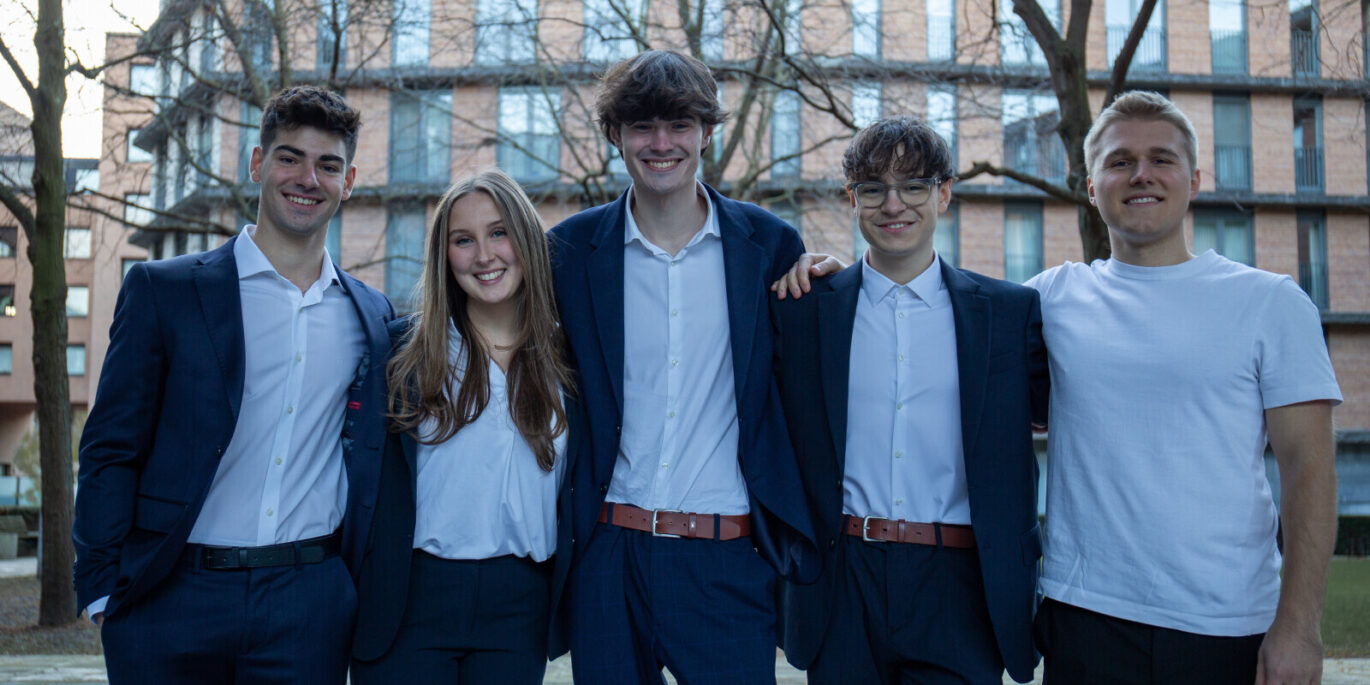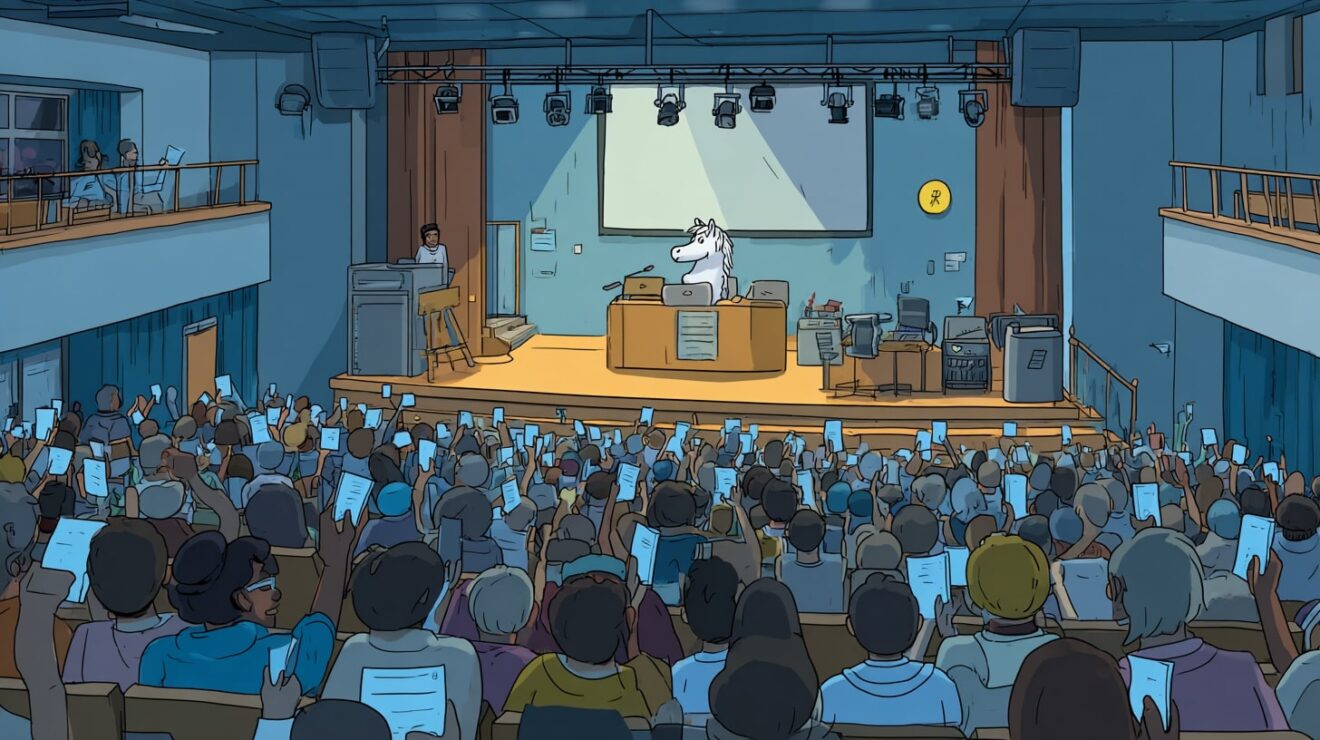Curation repeated over time with ritual in a campus with people brought in via contribution adds up to community.
The concept of community is often central to the work of SUs.
Evidence on Wonkhe and elsewhere suggests that feeling part of community directly impacts students’ sense of well-being and belonging, attendance, uptake of extra-curricular benefits and academic performance.
What is less clear is how we support the creation and success of such community, particularly within financially constrained environments.
In theory community is, or should be, the most natural thing in the world for humans.
Yet we know that’s not the case, especially for young people going through the transition of higher education. Nationally we see the rise in concerns over student mental health linked to the pressures to cost of living, demands to succeed academically as well as wider social factors leading to lower participation in community activities.
The isolating effects social media can have, the ease of solo consumption of digital entertainment and increasing restrictions on how people use and access spaces all compound this.
As NSU develops its new strategy, this question is at the front of our thinking. How do we actively intervene and add value to support community without detracting from authentic, student led community? I know community is not a panacea for those issues, but much like green space, we feel its loss when it’s gone.
I don’t think there will ever be one approach. My thinking on this has been shaped by two lenses, Substack articles about social clubs in New York and Oldenburg’s Third Place Theory.
While there is significant overlap, the former is suited to thinking about student activities while the latter is more about physical place.
Distributed hospitality
This first lens suggests community is a stool built of four legs – campus, curation, rituals and contribution to which must be considered scale.
Campus (shared space) refers to the psychologically tagged, physical space where students expect and are encouraged to gather. With so much of our lives these days are online, I would argue the physical becomes ever more important in response.
At Northumbria one way we apply this is at our London campus. Access to space is much more restricted than Newcastle and so the way we support student groups is different, funding requests to book rooms in commercial spaces that we wouldn’t do in Newcastle where space is more freely available and accessible without the costs of commuting.
Curation (vetting and belonging) Already curated by institutional membership, students further self-curate based on niche interests of the student group or community. The SU’s role is not to remove this, but to positively support it by training committees to manage the curation process.
Clearly initiations are prohibited but there should be some form of curation and event to bring new people into the group – likely several. This is reflected in our training and, a couple of years ago, in removing minimum membership requirements to establish a society, allowing students a wider range of choices to curate into.
Rituals (regularity and integration) These are the regular activities that happen. They can be large things once a year (Varsity) or regular weekly meetings (required for many societies). While those rituals are different for different groups depending on activity, the key is the regularity.
And they don’t all need to be on campus. Rather if we get the sense of campus right, that psychological sense of place and curation extends into the activity.
For me the fourth leg, contribution, is where SUs add the real value to create campus community through student leadership.
Giving back to the group makes you feel invested, like you’re part of something larger.
Student groups depend on the freely given contribution of their leaders and members. As SUs we are best placed to encourage and capitalise on that contribution to build community on campus.
As an example, SUs have a high tolerance for the risks associated with genuine student leadership, as I am sure the long list of weird requests and risk assessments, we all do show and that tolerance is important for genuine student led activity.
Contribution is the leg most under threat from the demands students face which I mentioned above. These take away their time and confidence to contribute. Without contribution it is more likely students are receiving a service not building a community.
By placing the value of student contribution front and centre in our strategic vision I hope we’re staying true to the origins of the movement and valuing something that can easily be undervalued when set against other drivers.
Again, there isn’t one answer but the historic work SUs have done on campaigns to keep Wednesday afternoon’s free for sport and extracurricular activity, to ensure students have that time to contribute, shows how we can approach this.
Another area SU staff add value is the way we support student leaders to anticipate and manage the demands of organising events and activities, to help build their confidence and remove unnecessary administration while ensuring the safety and wellbeing of all involved.
Scale – When money is tight, the temptation is to scale up but does this really build community? Large is intimidating and it becomes hard to value individual contribution.
Many large societies, such as our music society, are really several smaller overlapping ones in a trench coat. This brings benefits but requires treating them as both one group and several – with corresponding flexibility in funding and space allocation.
As well as thinking about how to scale societies for community, thinking about appropriate scale naturally connects to how we design and conceptualise physical spaces, particularly concepts of Third Place that I think have relevance to SUs.
Neither here nor there
Having heard this term used a lot I went back to Ray Oldenburg’s work. He defines Third Place as a space neither home nor work/study and think it is deeply relevant to the work of SUs where students may psychologically move from second place (work or study) into a third place while remaining physically in the same building or complex.
I think by articulating these qualities SUs can better define the distinctive role they play within that campus, whether an actual campus or a series of buildings spread across a town.
Neutral Ground: Individuals have no obligation to be there, free to come and go as they please without any formal membership or expectation of involvement. While being a student is a formal membership it is pretty broad. In a world of increasingly commercialised spaces, I think it is important that this freedom from obligation extends to freedom from having to spend money to be in the SU, even in the commercial areas.
Leveller: The physical space doesn’t discriminate based on a person’s social or economic status, and everyone is welcome.
Conversation is the main activity: These places are primarily designed for conversation and socializing, not for commerce or a specific task. Indeed, I would argue the activities we host are secondary to the opportunities they provide for students to talk to each other, during or before or after. Like contribution, the importance of this can be easily overlooked if not placed at the centre of our thinking, but its through that conversation that we build connection and community.
Accessible and accommodating: A third place should be easy to get to and offer convenient hours that allow for frequent, spontaneous visits. I’d argue that SU spaces should go further and be places students can feel ownership of, such as moving furniture around and arrange to suit their needs. In this way we differentiate ourselves from work or commercial spaces where tolerance for such activity is at best much lower.
The regulars: A core group of regular patrons gives the place its unique character and provides a sense of community for newcomers. All SUs depend on core groups of volunteers but this can lead to in group and out group perceptions. As part of the strategy, we need to think how we bridge those in group and out groups without working against natural human bonding.
A low profile: Third Places are typically unassuming and provide a comfortable, low-key setting that allows people to relax and be themselves. As mentioned in scale I think its worth SUs bearing in mind for rebuilds and redesign – large and imposing may look pretty but work against a sense of community.
None of this is a magic bullet or sure path to success, but I think the benefits of articulating mean we value what is often taken for granted or assumed “will just happen”, but that is a form of survivors’ bias.
Students who don’t fit in or feel part of a community are likely those most likely to leave or not be remembered.
Nor is this an argument that the SU should be the only community on campus. There will be many examples where student communities don’t involve the SU.
But, by recognising what is needed to help communities form, the SU fulfil its role in student voice, speaking for those students to ensure they have the environmental conditions to help their communities thrive.


















